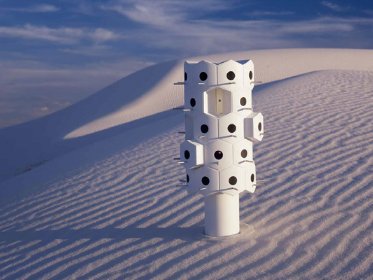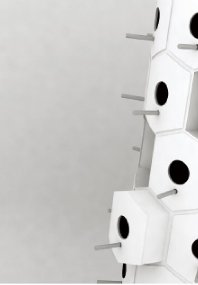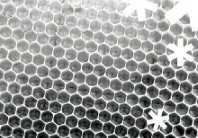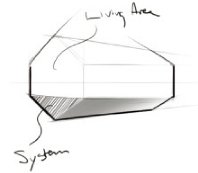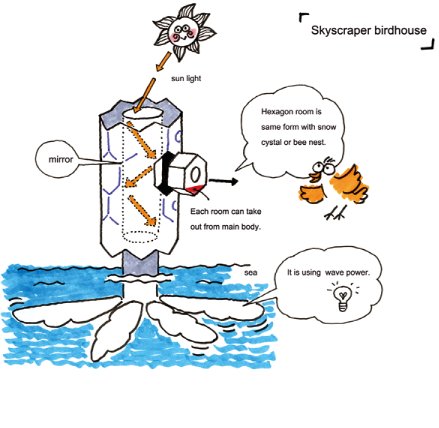| Master of industrial design, Lund institute of Technology, Lund Univ. Majors in House building, Founder and managing Director of 'Umbilical Deign A B'. Currently working with space technology transfer project and intcrion design for a Parabolic Flight Plane for tourists. Cooperation with NASA, JSC, Lund Univ, ESA. The most extensive project has been 'Crew Return Vehicle Interior Layout'. Her designs were on display at ESA SPCE EXPO. | | |
| The Seascraper
The Birdhouse Project
The Birdhouse Project is a Japanese initiative that deals with tomorrow's ways of living from a socioecological point of view. Participating designers and architects with different professional backgrounds create conceptual models that reflect their vision of future accommodation and life. Cecilia Hertz has been invited as one of nine international space designers to participate in the eighth edition of the project. Since the start 1993 seven exhibitions have been arranged to display the models. Starting in Japan, the exhibition tours around the world.
Background
The background of The Birdhouse Project is theincreased globalization and the socioecological changes that follow. People have increasing demands on comfort and standard of living. People become more movable and at the same time more concentrated to certain areas. Simultaneously the strains on the environment increase, and we consume increasing amounts of resources. The Birdhouse Project aims to raise questions about urbanization and environment and how these factors can be handled for a sustainable development. About Cecilia Hertz's Participation
Cecilia Hertz works with both space design and technology transfer from the space industry to consumer products in collaboration with the European Space Agency and NASA. With her participation in The Birdhouse Project, Cecilia Hertz aims to combine technology from nature, biomimetics, and the space industry in order to create a conceptual idea of future habitation. By using existing technology in new ways something both visionary and possible to realize is created. The first ideas were inspired by snow flakes and their symmetrical hexagonal shape. Put together to form a larger structure, the structure evolved into the shape of honeycombs, a structure able to carry heavy loads. The Seascraper® Concept
The Seascraper® is a high-rise building placed offshore. The background is the increasing density of the population and the raising water lines. The Seascraper® birdhouse will be exhibited together with the other models in an exhibition. Starting in Japan, they tour around the world. The Seascraper® would stand in the water outside a city, fastened in the seabed. The main structure is built like a giant honeycomb. This creates hexagonal open spaces between the walls, where prefabricated habitation modules are attached. The modules can be of varying length. They can also be detached from one Seascraper® and moved to another. In the center of The Seascraper® is a perforated backbone that carries electricity, water and other supporting systems to the habitation modules. All consumed electricity is generated around the building, using the sun, wind and water as resources. The Seascraper® Birdhouse
To visualize The Seascraper®, a birdhouse is created. The structure was enlarged into a building, and the concept of The Seascraper® was developed. | |

